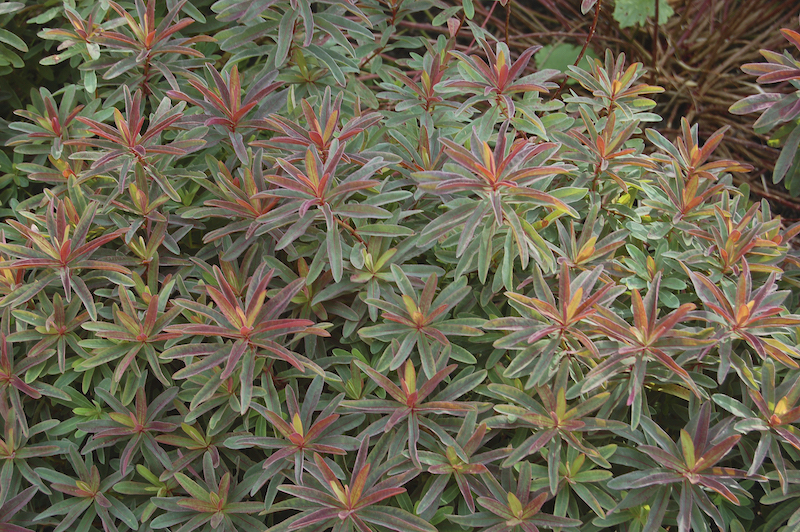Growing Euphorbia
There are thousands of species in the Euphorbia or Spurge family. They have an infinite range of colors, textures, and growth habits that put on a wonderful display in any garden. Foliage colors range from chartreuse, blue, green, and shades of rusty reds to variegated options. They produce a spring or summer bloom and fantastic fall color. They are deer resistant, low fuss, and often evergreen, and make an attractive, easy-to-care-for addition to your garden.

Planting Euphorbia
Plant Euphorbia in full sun locations, which will bring out the full range of color. Euphorbia can tolerate partial sun but flowering and foliage color may not be as vibrant. These plants thrive in well-draining, lean soils; they don’t like to be sitting in wet soil, which can cause root rot. Most varieties of spurge spread by rhizomes, creating a dense mat, which is helpful when used to choke out weeds. You can manage their spread simply by digging up the runners if you don’t want them mingling with other garden plants.

Watering Euphorbia
Water newly planted Euphorbia plants every few days once you notice the top layer of soil is dry. Once the plants mature, water them less frequently. Most varieties prefer soil moisture on the drier side and are fairly drought tolerant.
Fertilizing Euphorbia
During the growing season, fertilize Euphorbia with a diluted, well-balanced, water-soluble fertilizer with an NPK ratio of 10-10-10, or select a balanced fertilizer that contains important trace elements. Overfertilization of slower-growing varieties can harm the plant more than not fertilizing. Carefully follow package instructions.
Pruning Euphorbia
There are generally two groups of Euphorbia: caulescent and acaulescent. Caulescent types have stems above ground all year, and acaulescent types have only seasonal stems above ground. Do not cut caulescent varieties to the ground because they will not flower the following spring. Acaulescent types go dormant in fall and can be cut back to a few inches from the soil level. Wear gloves when pruning Euphorbias, as they have a milky sap that comes out of the stem when cut, and it can cause irritation to your skin. Some varieties spread their seeds prolifically, so you may want to deadhead them to control eventual spread.
Caring For Euphorbia in Pots
When planting Euphorbia in containers, select a pot with ample drainage holes, and use a cactus mix for best results. Spurge is prone to root rot if it sits in soggy soil. Place the potted plant in a sunny location. They are relatively low maintenance and easy to care for. Potted plants should be pruned in the same way as plants growing in the landscape.

Winter Care for Euphorbia
Acaulescent varieties of Euphorbia can be cut close to the ground in late autumn. Caulescent varieties only need to be pruned in spring if stems show signs of winter damage.
 |
Author Chris Link - Published 03-16-2023 |
